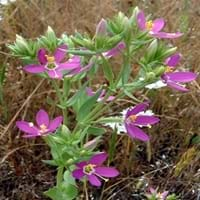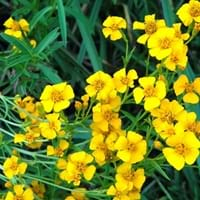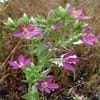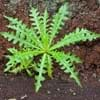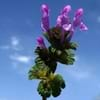Life Span
Perennial
Annual
Type
Herbs, Perennial
Flowering Plants, Shrubs
Origin
Mexico, Latin America and the Caribbean, Central America, South America
Mexico, Central America
Types
Not Available
African or American Marigolds, French Marigolds, Mule Marigolds
Number of Varieties
Not Available
Habitat
Mountains
Roadsides, wastelands
USDA Hardiness Zone
Not Available
9-11
AHS Heat Zone
Not Available
12 - 1
Sunset Zone
Not Available
A1, A2, A3, H1, H2, 1a, 1b, 2a, 2b, 3a, 3b, 4, 5, 6, 7, 8, 9, 10, 11, 12, 13, 14, 15, 16, 17, 18, 19, 20, 21, 22, 23, 24
Habit
Clump-Forming
Upright/Erect
Flower Color
White
Yellow, Orange, Gold, Ivory
Flower Color Modifier
Bicolor
Bicolor
Fruit Color
Not Available
Not Available
Leaf Color in Spring
Green, Light Green, Dark Green
Dark Green
Leaf Color in Summer
Green, Light Green, Dark Green
Dark Green
Leaf Color in Fall
Green, Light Green, Dark Green
Dark Green
Leaf Color in Winter
Light Green
Light Green
Leaf Shape
Narrow Oblong
Toothed
Plant Season
Summer, Fall
Summer, Fall
Sunlight
Full Sun, Partial Sun
Full Sun
Growth Rate
Very Fast
Very Fast
Type of Soil
Clay, Loam, Sand
Clay, Loam, Sand
The pH of Soil
Acidic, Neutral, Alkaline
Neutral, Alkaline
Soil Drainage
Well drained
Well drained
Bloom Time
Indeterminate
Indeterminate
Tolerances
Drought
Drought
Where to Plant?
Container, Ground
Container, Ground, Pot
How to Plant?
Seedlings, Stem Planting
Seedlings
Plant Maintenance
Medium
Medium
Watering Requirements
Never Over-water, Requires watering in the growing season, Water Deeply
Allow to dry out slightly between watering
In Summer
Lots of watering
Lots of watering
In Spring
Moderate
Moderate
In Winter
Average Water
Average Water
Soil pH
Acidic, Alkaline, Neutral
Alkaline, Neutral
Soil Type
Well drained
Clay, Loam, Sand
Soil Drainage Capacity
Well drained
Well drained
Sun Exposure
Full Sun, Partial Sun
Full Sun
Pruning
Remove damaged leaves, Remove dead branches, Remove dead leaves
Prune ocassionally, Remove dead or diseased plant parts, Requires little pruning
Fertilizers
All-Purpose Liquid Fertilizer, fertilize in fall, fertilize in growing season, fertilize in spring, Water soluble fertilizers
All-Purpose Liquid Fertilizer
Pests and Diseases
Red blotch
Alternaria Leaf Spot, Bacterial leaf spot, Damping-off, Gray mold, Powdery mildew, Root rot
Plant Tolerance
Drought
Drought
Flower Petal Number
Single
Single, Double, Semi-Double
Fragrant Bark/Stem
No
Yes
Foliage Texture
Fine
Coarse
Foliage Sheen
Matte
Matte
Attracts
Flying insects, Not Available
Butterflies
Allergy
no allergic reactions
Not Available
Aesthetic Uses
Beautification, Bouquets, Landscape Designing, Showy Purposes
Showy Purposes
Beauty Benefits
Improve skin condition
Not Available
Environmental Uses
Air purification, Food for insects, soil erosion prevension on hill slopes
Air purification
Medicinal Uses
Diarrhea, Eczema, Indigestion, Malaria, Respiratory Disorders, Stomach pain, Weight loss
Burns, constipation, Inflammation, Upset stomach, Wounds
Part of Plant Used
Whole plant
Flowers, Seeds
Other Uses
Can be made into a herbal tea, Decoration Purposes, Employed in herbal medicine, Showy Purposes, Used as Ornamental plant
Can be made into a herbal tea, Decoration Purposes, Used As Food
Used As Indoor Plant
No
Yes
Used As Outdoor Plant
Yes
Yes
Garden Design
Edible
Flower borders
Botanical Name
EUPHORBIA hypericifolia
Tagetes lucida
Common Name
Canchalagua, Hypericum-leaved Spurge, Leche-leche
sweetscented marigold, Mexican marigold
In Hindi
Canchalagua
sweetscented marigold
In German
Canchalagua
süß duftend Ringelblume
In French
canchalangua
Yauhtli
In Spanish
canchalagua
pericón, Santa María, yerbanís
In Greek
Canchalagua
γλυκό άρωμα κατιφέ
In Portuguese
Canchalagua
Tarragon Mexicano
In Polish
Canchalagua
słodkie pachnące nagietka
In Latin
Canchalagua
sweetscented marigold
Phylum
Spermatophyta
Tracheophyta
Class
Dicotyledonae
Magnoliopsida
Order
Euphorbiales
Asterales
Family
Acanthaceae
Asteraceae
Clade
Not Available
Not Available
Tribe
Not Available
Not Available
Subfamily
Not Available
Not Available
Number of Species
Not Available
Season and Care of Canchalagua and Sweetscented Marigold
Season and care of Canchalagua and Sweetscented Marigold is important to know. While considering everything about Canchalagua and Sweetscented Marigold Care, growing season is an essential factor. Canchalagua season is Summer and Fall and Sweetscented Marigold season is Summer and Fall. The type of soil for Canchalagua is Clay, Loam, Sand and for Sweetscented Marigold is Clay, Loam, Sand while the PH of soil for Canchalagua is Acidic, Neutral, Alkaline and for Sweetscented Marigold is Neutral, Alkaline.
Canchalagua and Sweetscented Marigold Physical Information
Canchalagua and Sweetscented Marigold physical information is very important for comparison. Canchalagua height is 25.40 cm and width 30.50 cm whereas Sweetscented Marigold height is 60.00 cm and width 50.00 cm. The color specification of Canchalagua and Sweetscented Marigold are as follows:
Canchalagua flower color: White
Canchalagua leaf color: Green, Light Green and Dark Green
Sweetscented Marigold flower color: Yellow, Orange, Gold and Ivory
- Sweetscented Marigold leaf color: Dark Green
Care of Canchalagua and Sweetscented Marigold
Care of Canchalagua and Sweetscented Marigold include pruning, fertilizers, watering etc. Canchalagua pruning is done Remove damaged leaves, Remove dead branches and Remove dead leaves and Sweetscented Marigold pruning is done Prune ocassionally, Remove dead or diseased plant parts and Requires little pruning. In summer Canchalagua needs Lots of watering and in winter, it needs Average Water. Whereas, in summer Sweetscented Marigold needs Lots of watering and in winter, it needs Average Water.
